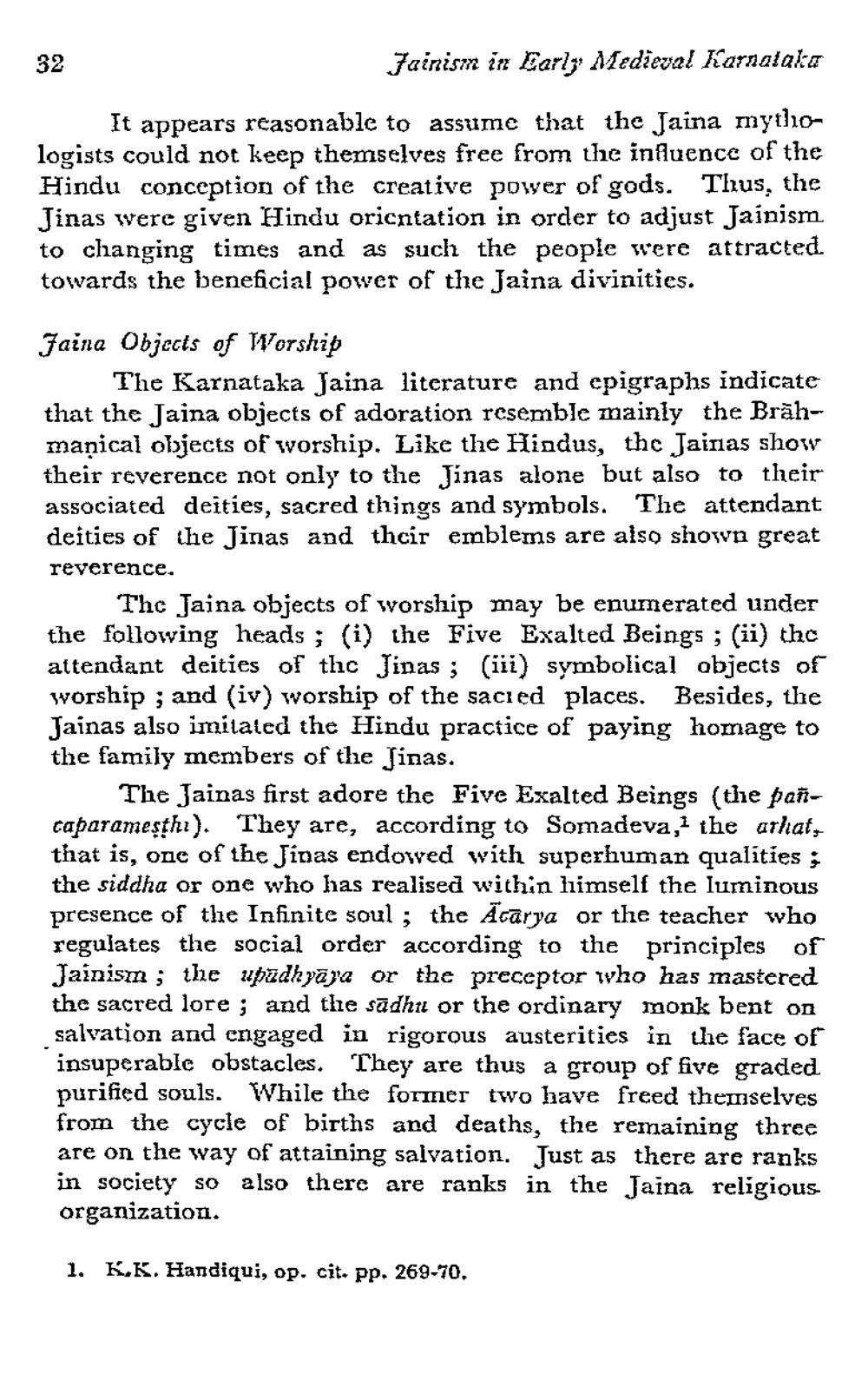________________
32
Jainism in Early: Medieval Karnataka
It appears reasonable to assume that the Jaina mytliologists could not keep themselves free from the influence of the Hindu conception of the creative power of gods. Thus, the Jinas were given Hindu oricntation in order to adjust Jainism to changing times and as such the people were attracted. towards the beneficial power of the Jaina divinities.
1.
Linas
Faina Objects of Worship
The Karnataka Jaina literature and epigraphs indicate that the Jaina objects of adoration resemble mainly the Brāhmaņical objects of worship. Like the Hindus, the Jainas show their reverence not only to the Jinas alone but also to their associated deities, sacred things and symbols. The attendant deities of the Jinas and their emblems are also shown great reverence.
The Jaina objects of worship may be enumerated under the following heads; (i) the Five Exalted Beings ; (ii) the attendant deities of thc Jinas ; (iii) symbolical objects of worship ; and (iv) worship of the sacied places. Besides, the Jainas also imilated the Hindu practice of paying homage to the family members of the Jinas.
The Jainas first adore the Five Exalted Beings (the pancaparameşthi). They are, according to Somadeva, the arhat, that is, one of the Jinas endowed with superhuman qualities; the siddha or one who has realised within himself the luminous presence of the Infinite soul; the Acarya or the teacher who regulates the social order according to the principles of Jainism ; the upadhyaya or the preceptor who has mastered the sacred lore ; and the sādhil or the ordinary monk bent on salvation and engaged in rigorous austerities in the face of insuperablc obstacles. They are thus a group of five graded purified souls. While the former two have freed themselves from the cycle of births and deaths, the remaining three are on the way of attaining salvation. Just as there are ranks in society so also there are ranks in the Jaina religious organization.
1. KK. Handiqui, op. cit. pp. 269-70.




